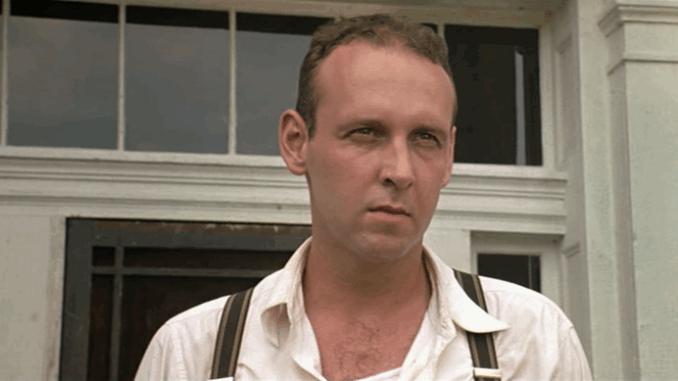
In a world fueled by streaming marathons and ever-shortening attention spans, one film continues to bring viewers back to the porch swing of the past: Fried Green Tomatoes. Released in 1991, the quiet Southern drama still has the uncanny ability to evoke laughter, tears, and even life-changing perspective—all in under two hours.
But what is it about this film that still connects with viewers in 2025? And why does it seem more relevant now than ever?
The answer, perhaps, lies not in what the film does—but in how it makes us feel.
A Story that Speaks in Two Voices
The brilliance of Fried Green Tomatoes lies in its narrative structure. It tells two stories: one set in the 1980s, where Evelyn Couch (Kathy Bates), a frustrated and overlooked housewife, stumbles into a transformative friendship with the elderly and talkative Ninny Threadgoode (Jessica Tandy). The second story unfolds through Ninny’s recollections of Whistle Stop, Alabama, in the early 20th century—specifically the bond between Idgie Threadgoode (Mary Stuart Masterson) and Ruth Jamison (Mary-Louise Parker).
These parallel journeys—one of modern rediscovery, the other of historical resistance—intertwine to form a rich narrative tapestry. It’s storytelling at its most humane, filled with warmth, tragedy, rebellion, and unexpected hope.
“I think people return to it because it feels like being told a story by someone who really knows you,” says Dr. Elise Porter, a media psychologist. “It’s intimate. It’s comforting. But it’s also quietly radical.”
Finding Yourself in the Characters
The characters are what give Fried Green Tomatoes its emotional longevity. Evelyn, in particular, has become a symbol of transformation for women who feel trapped or invisible. Watching her evolve from a timid homemaker to a woman who declares, “I’m older and I have more insurance!” remains one of the most cathartic arcs in film history.
For others, it’s Idgie’s unflinching independence that strikes a chord. Her defiance of gender roles and social expectations has made her a feminist icon—and a queer one. While the film never overtly labels the relationship between Idgie and Ruth, their deep love and lifelong partnership are now widely embraced by LGBTQ+ viewers as authentic and groundbreaking.
“They were more than friends,” says viewer Lauren Matthews, 34, from Atlanta. “They were soulmates. That’s why it still hurts—and heals—every time I watch it.”
A Mirror of Southern Life—and Pain

Beyond its character work, Fried Green Tomatoes is also an evocative portrait of Southern life. It doesn’t romanticize it. Racism, misogyny, and domestic violence are all addressed head-on. But rather than preach, the film observes—and often challenges—these issues through the eyes of its characters.
In one of the film’s most powerful turns, the character Sipsey (Cicely Tyson) commits a drastic act to protect Ruth’s child. The scene, steeped in moral ambiguity, remains a haunting reminder of the sacrifices people make for love—and the price of justice when the system fails.
“You don’t expect a film with a name like Fried Green Tomatoes to contain such profound darkness,” says cultural critic Henry Gault. “But that’s part of its brilliance. It’s about survival in a world that doesn’t always care if you survive.”
The Power of Female Friendship
At its core, Fried Green Tomatoes is a love letter to female friendship in all its forms—between Evelyn and Ninny, between Idgie and Ruth, and even among the women of Whistle Stop who form a silent network of support in a patriarchal world.
In today’s age of online feminism, these portrayals feel especially poignant. They offer a vision of solidarity that’s not performative, but deeply human. Not just women supporting each other—but healing each other.
“It reminds us that women have always saved each other,” notes author Camille Stroud. “Long before hashtags.”
Passed Down Like a Recipe
What’s striking about Fried Green Tomatoes today is how often it’s introduced not by recommendation—but by tradition.
“My mom showed it to me when I was 15,” says Jordan Ramirez, 25. “We cried together. Now I watch it with my little sister every summer.”
Like a favorite family recipe, the film is passed down through generations, often watched during moments of change, grief, or reflection. It becomes a kind of emotional comfort food—something viewers return to when they need perspective, or just need to feel held.
And with its themes of aging, memory, and the power of storytelling, the film feels like it’s speaking not just to individuals—but to time itself.
The Story Never Ends
The final moments of the film, when Evelyn visits Ninny in the nursing home and discovers the blurred line between fact and fiction, remain some of the most touching in cinema. Did Ninny really live the life she described? Was she Idgie all along? The film never says.
And that ambiguity is part of the magic. Because Fried Green Tomatoes isn’t about solving a mystery. It’s about how stories—true or not—can change lives.
In 2025, as we navigate a world that often feels fragmented and frantic, the enduring message of this film lands with greater clarity than ever:
Tell stories. Share meals. Love fiercely. And never be afraid to reinvent yourself.
